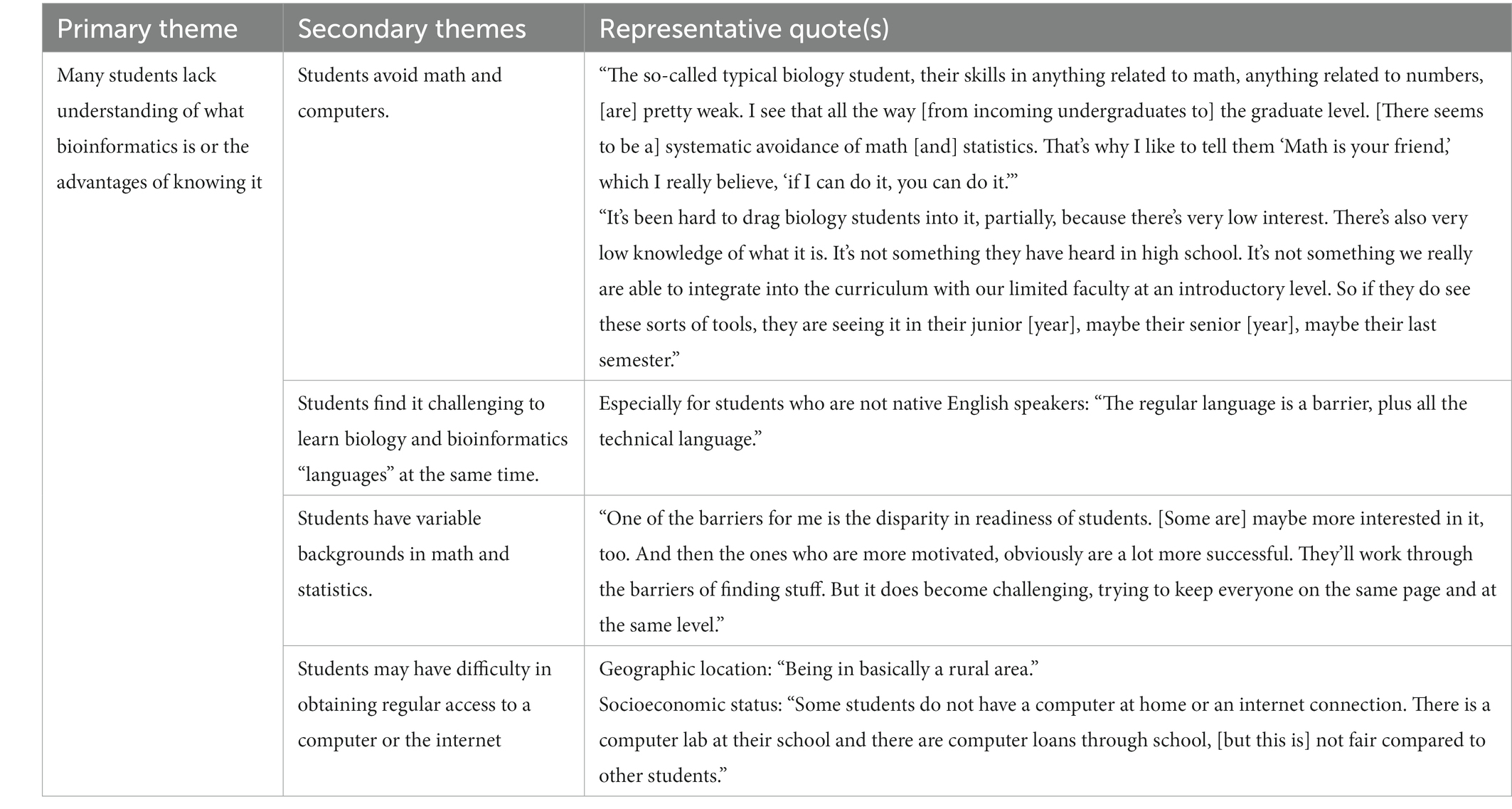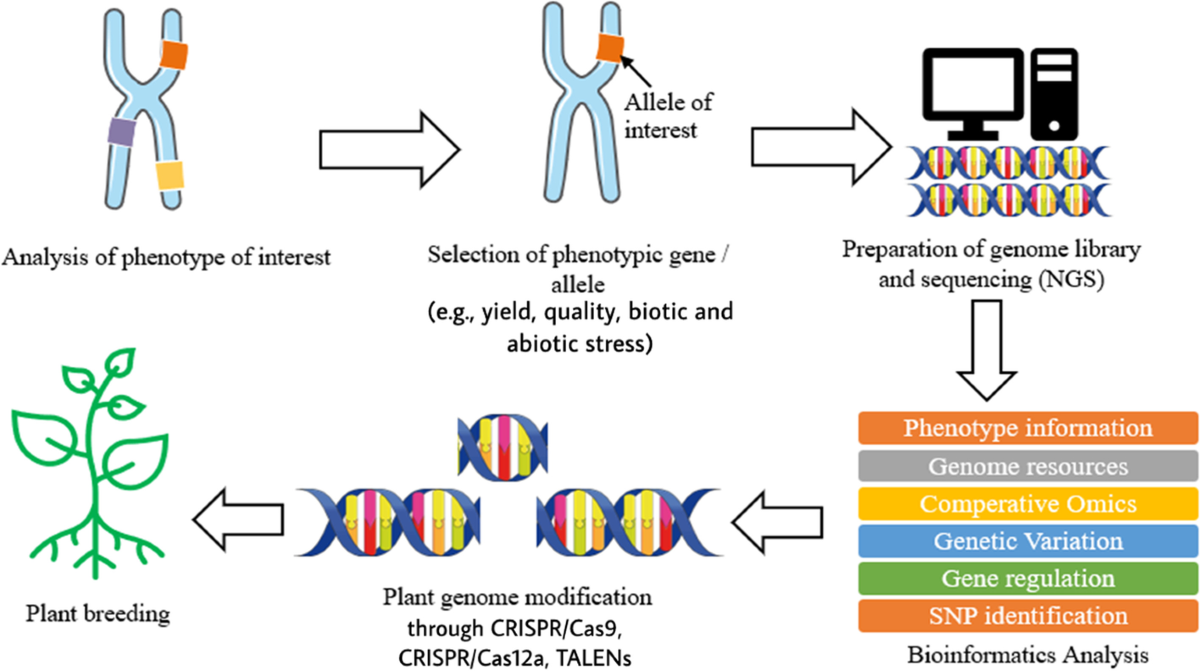Bioinformatics Tutor - Truths
Bioinformatics Tutor - Truths
Blog Article
8 Simple Techniques For Bioinformatics Tutor
Table of ContentsBioinformatics Tutor Things To Know Before You Get ThisAbout Bioinformatics TutorExamine This Report on Bioinformatics TutorThe Best Strategy To Use For Bioinformatics Tutor8 Simple Techniques For Bioinformatics Tutor
Of the total amount individuals associated with the training, 80% were trainees from public higher education institutions, while the continuing to be 20% originated from personal institutions. To qualify for a certification of involvement, trainees were required to attend at the very least 90% of the total training hours. As an outcome of this demand, a remarkable 95% of the individuals effectively obtained their certifications, having not only met the minimum attendance standards however also finished all designated activities throughout the training.
Throughout the height of the COVID-19 pandemic, specifically in between June and August 2020, the project team was entrusted with arranging specialized training in bioinformatics. This training was particularly targeted at students from the study group Core for Research study in Applied Computing at the Federal College of Pará (UFRA) The adjustment to remote discovering platforms as a result of the pandemic produced an opportunity to check out brand-new teaching methods and digital tools that boosted both reach and efficiency.
To respond to the expanding need in the computer and life sciences fields, an advanced course was introduced in 2020 titled Intro to Artificial intelligence. This training course was created to offer an easily accessible yet detailed summary of Expert system techniques, specifically as used in bioinformatics. The program was carried out over 3 months, from October to December 2020, and was supplied completely online with the Google Meet platform. This digital style enabled engagement from trainees across Brazil, much of whom could not have had the chance to attend in-person sessions.
Our Bioinformatics Tutor Diaries
Roughly 50% of the overall training hours were devoted to useful activities where trainees developed intelligent designs and applications in a variety of scientific domains, including genetics, molecular biology, and environmental data analysis. These systems made it possible for pupils to involve in real-time information adjustment, version training, and formula testing.
Sixty of them were affiliated with numerous greater education institutions in the state of Pará, while the continuing to be twenty came from organizations located in 5 other Brazilian states. By introducing Artificial Knowledge in a useful and relevant context, the initiative offered to bridge the void between concept and real-world application, supplying students with a strong foundation for future study or employment in the area.
The training initiative created part of a broader academic outreach initiative called the Bioinformatics on the Roadway job. This task has, throughout the years, presented dozens of pupils to the world of bioinformatics and computational biology. The occasions held under this umbrella campaign have occurred across several areas and years, as summarized in Table 1 (Checklist of events, places, years, and complete numbers of pupils and trainers)
Among the most exceptional end results of the Bioinformatics on the Road campaign has actually been its contribution to the development of decentralized research teams. Numerous of these groups, at first brought with each other by their engagement in training events, have considering that gone on to produce independent clinical research in partnership with regional scholastic institutions. The training not only promoted clinical reasoning within the context of bioinformatics but likewise stimulated joint partnerships that expanded past the training environment. These collaborations have caused raised neighborhood clinical performance and contributed meaningfully to the development of the broader bioinformatics community in Brazil.
Some Known Details About Bioinformatics Tutor
The job itself was conceptualized and arranged by MB and RR, that managed the planning and execution of each action. Lectures were delivered by a multidisciplinary group containing megabytes, FA, EF, KP, JS, DM, SN, LP, LG, RR, ih, and air conditioning. The very same team, excluding IH and RR, also worked as tutors for the functional training modules. Financing for the project was given with the give 88887.200562/ 2018-00 from CAPES. The authors expand their thankfulness to everyone that added to the awareness of this task, whether directly or indirectly, since its beginning.
The Federal College of Pará's Workplace of Research study (PROPESP/UFPA) also offered financial backing, particularly for the manufacturing of the final manuscript. The authors proclaim no economic or industrial problems of interest that might have affected the research. All interpretations and opinions revealed in this post are only those of the writers and do not always mirror those of their corresponding establishments, the author, editors, or customers entailed in the magazine procedure.

Getting My Bioinformatics Tutor To Work
From a pedagogical perspective, the training strategy utilized in the training was intentionally interactive. Classes were conducted in a manner that encouraged student engagement and conversation, going beyond memorizing memorization to check out exactly how ideas are developed, applied in day-to-day life, and examined in scholastic settings. The instructional philosophy concentrated on nurturing both strong and battling trainees, offering individualized assistance, and building confidence via sustained mentorship and patience.

Each group, containing approximately 36 individuals, was sustained by three mentors-- a lot of whom were postdoctoral scientists with specific know-how. These coaches not only aided make the team jobs but additionally promoted their implementation, making sure that each research study question was both anonymous appropriately challenging and pertinent. The goal was to provide a naturally sensible context that participants might check out with flexible purposes and accessibility to curated datasets.
For extra insights right into the methodology and end results of this project-based discovering method, readers are guided to S1 Text, that includes thorough descriptions of the instructional framework, examination strategies, and task themes made use of in the training sessions.
The 15-Second Trick For Bioinformatics Tutor
Of the total participants included in the training, 80% were pupils from public higher education organizations, while the continuing to be 20% came from private organizations. To qualify for a certification of engagement, students were needed to participate in at least 90% of the total training hours. Significantly, beyond the trainees that enlisted in the training sessions, 7 experienced trainers took part in supplying the courses, while three devoted research study teachers worked with the total training procedure. Approximately 50% of the total training hours were dedicated to useful activities where trainees developed smart designs and applications in a variety of clinical domains, consisting of genetics, molecular biology, and ecological information evaluation. The training a fantastic read not just cultivated clinical reasoning within the context of bioinformatics however likewise sparked collective connections that expanded beyond the training atmosphere.
Report this page